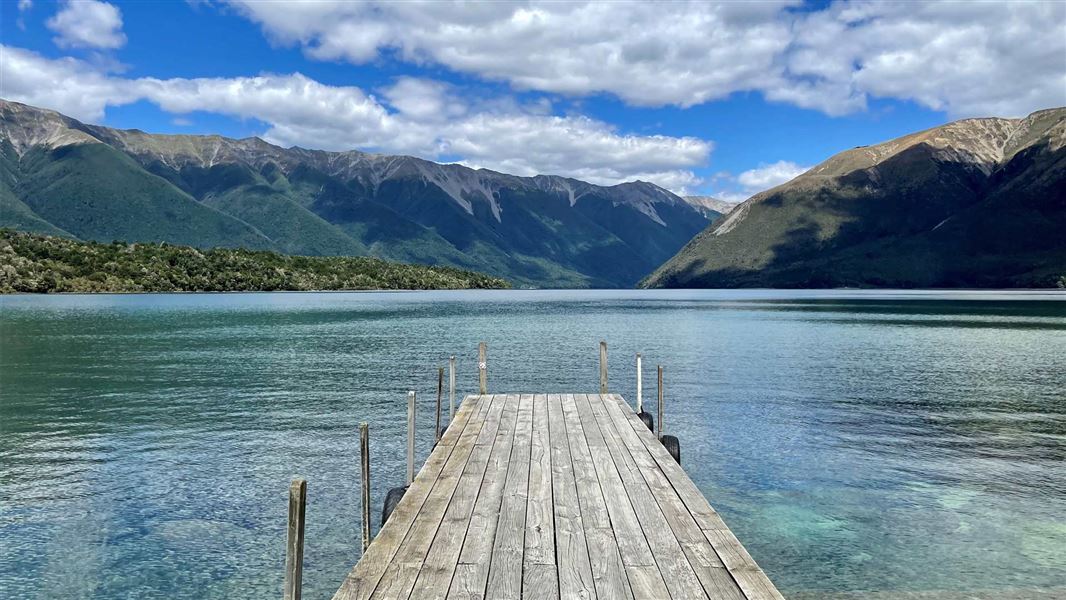
Located in Nelson Lakes National Park and St Arnaud area in the Nelson/Tasman region
Introduction
Walk around Lake Rotoiti, surrounded by high mountain peaks. It's a great option for families with children and there is the option to catch a water taxi one way or to stay overnight in a hut. This track is part of Te Araroa Trail.Stay safe in the outdoors
- Choose the right trip for you. Learn about the route and make sure you have the skills for it.
- Understand the weather. Check weather forecasts.
- Pack warm clothes and extra food. Check gear lists.
- Share your plans and take ways to get help. Share directly or use the Outdoor Intentions form or Plan My Walk. Take a distress beacon.
- Take care of yourself and each other.